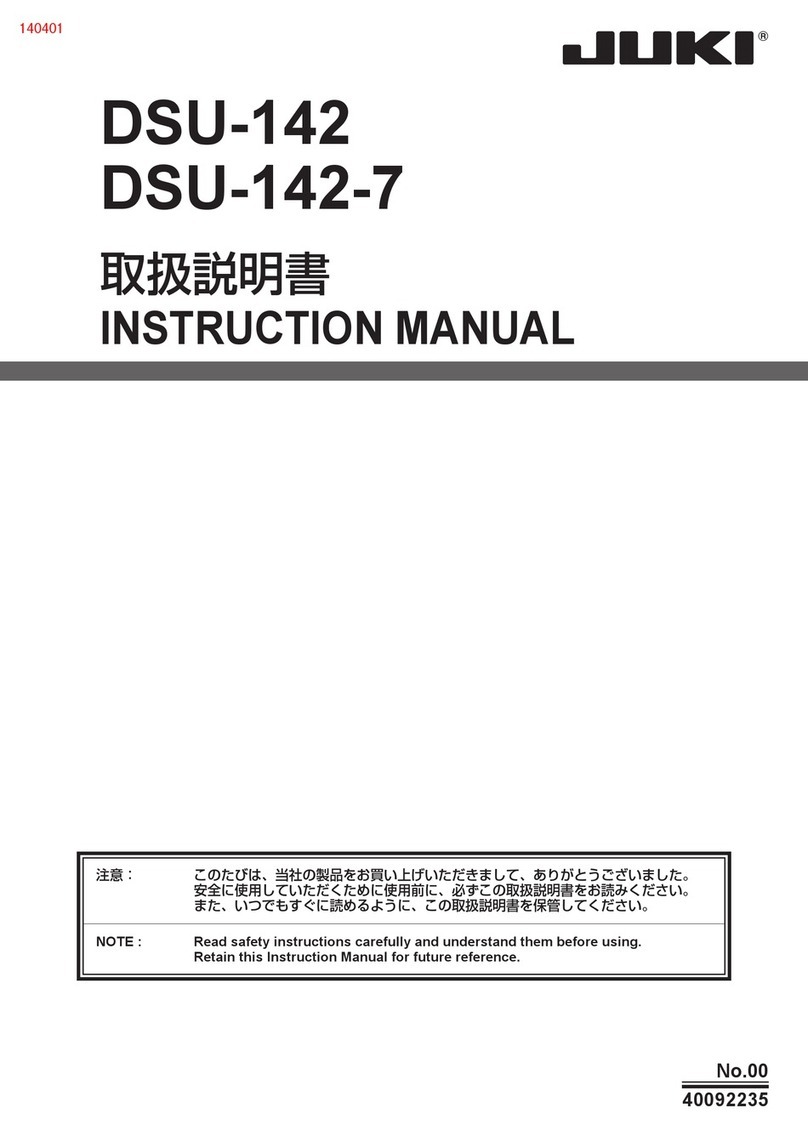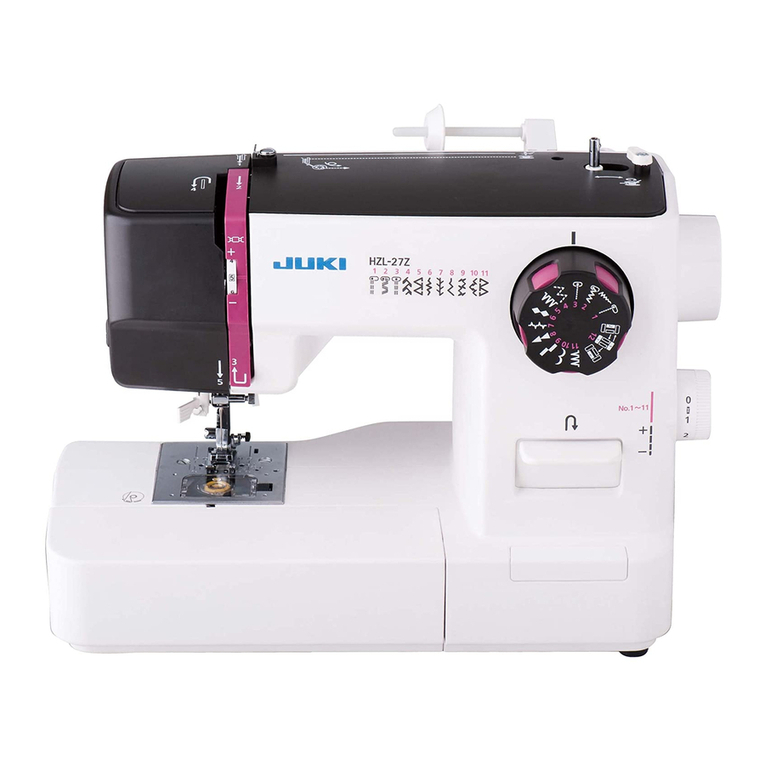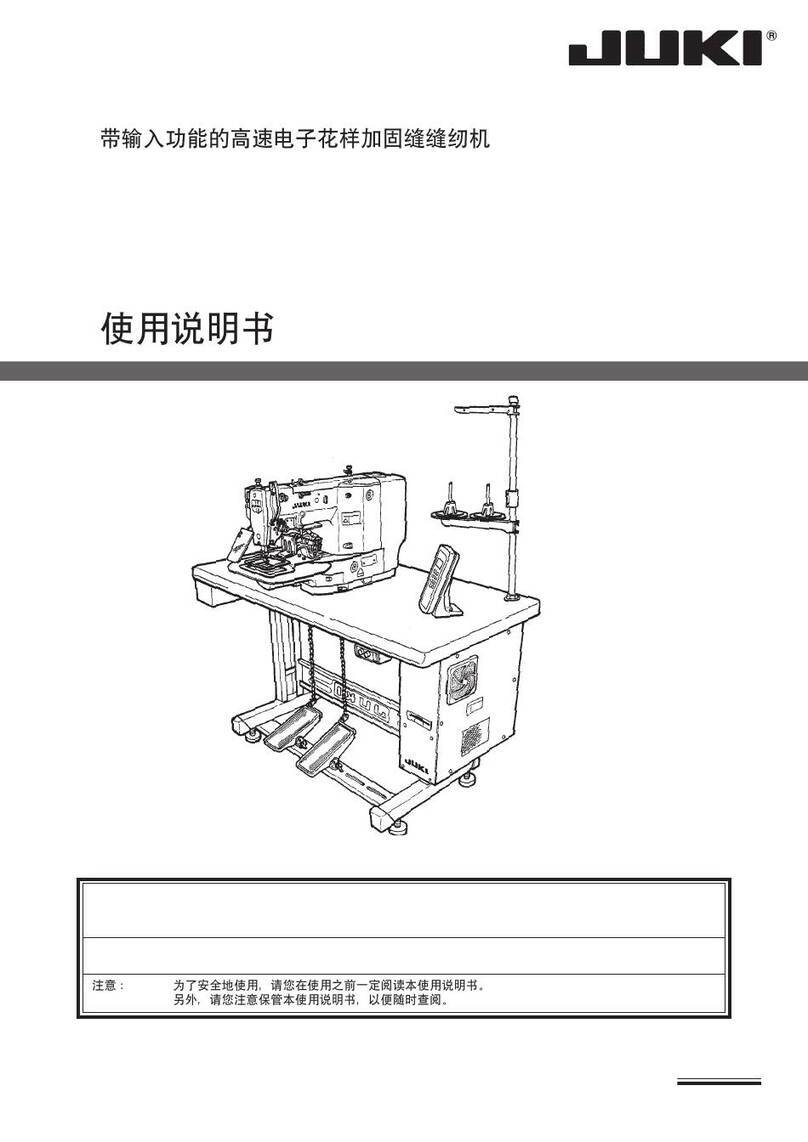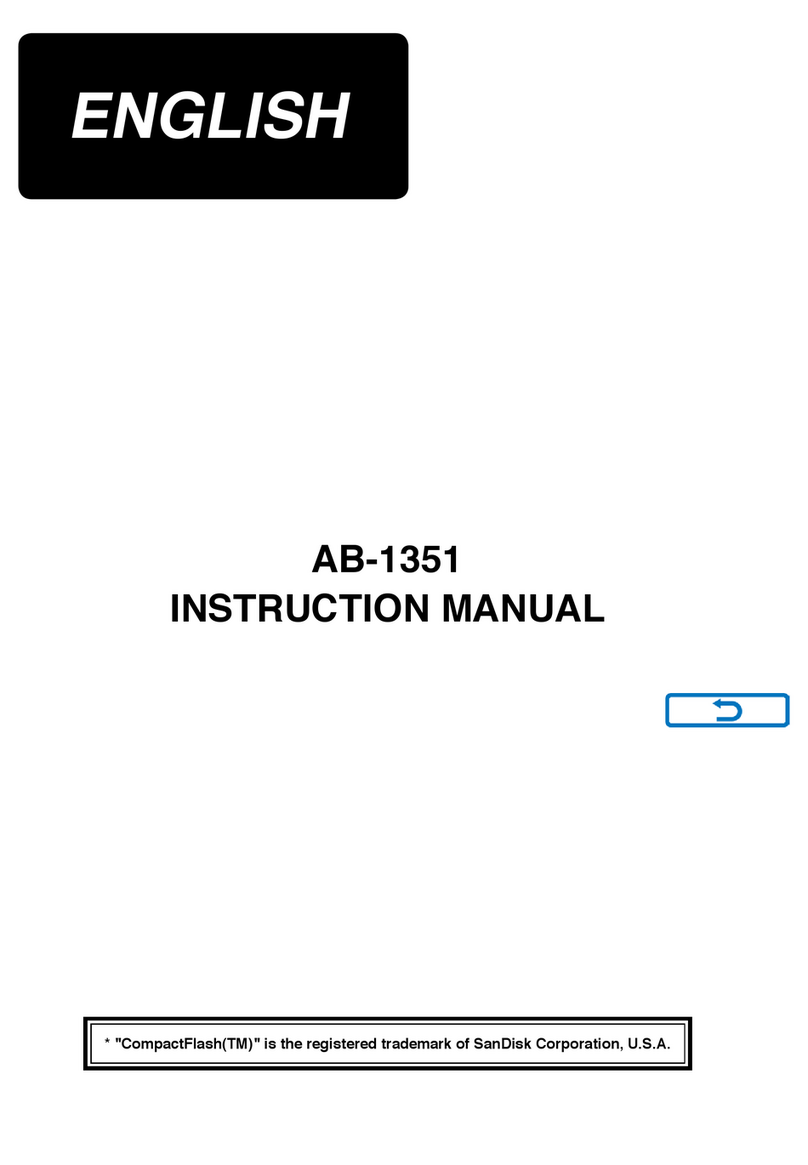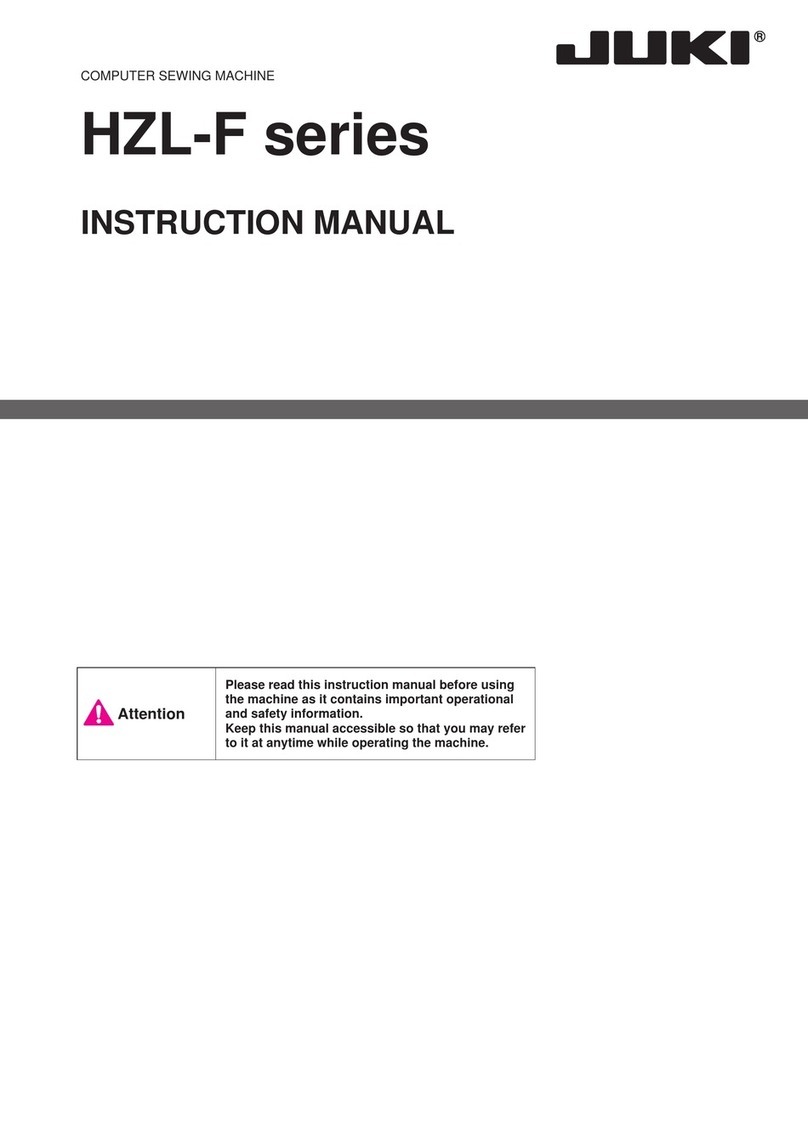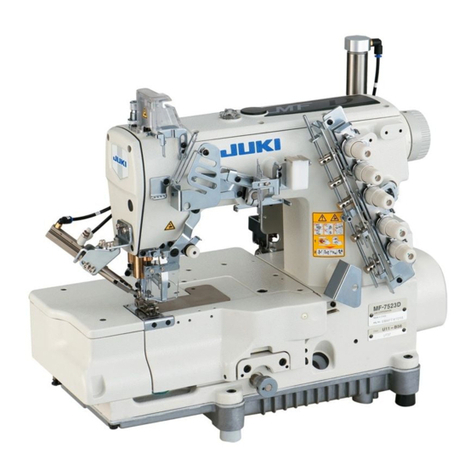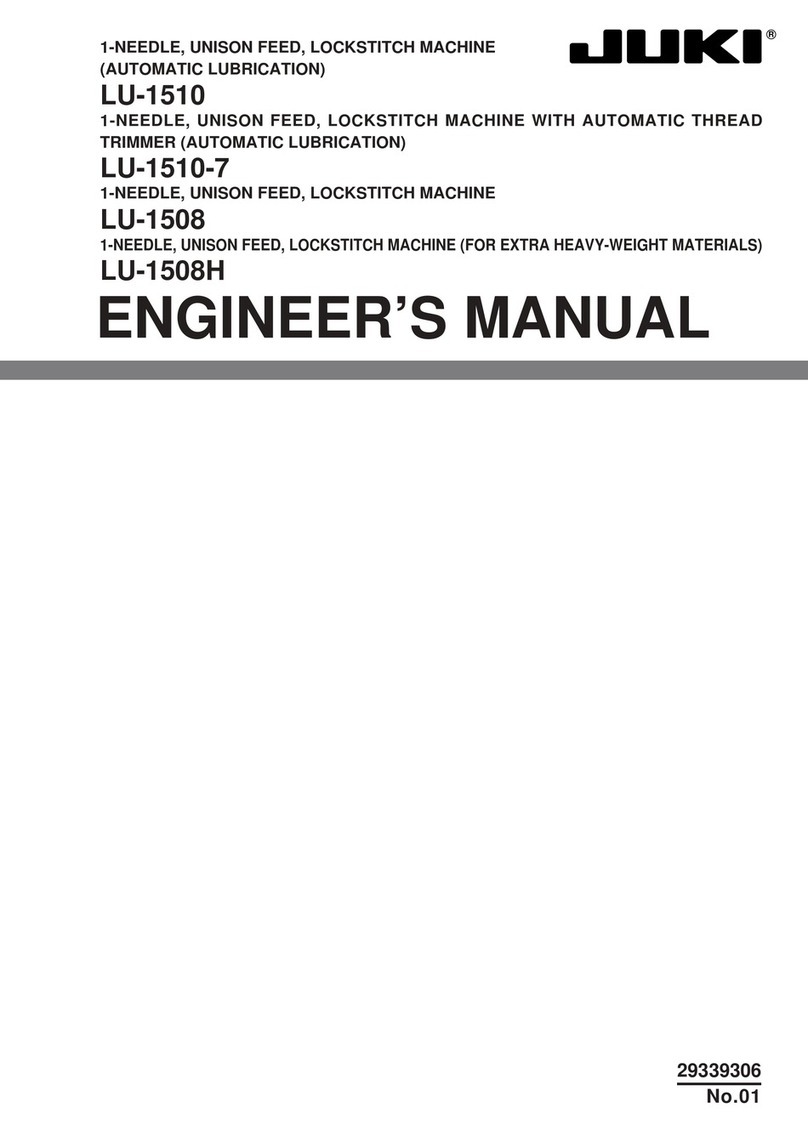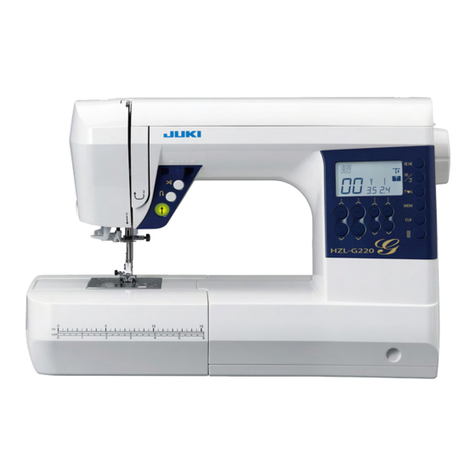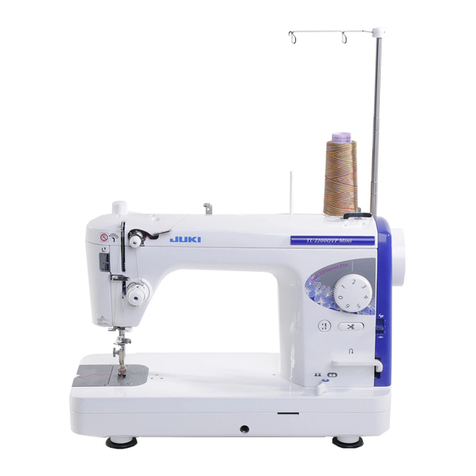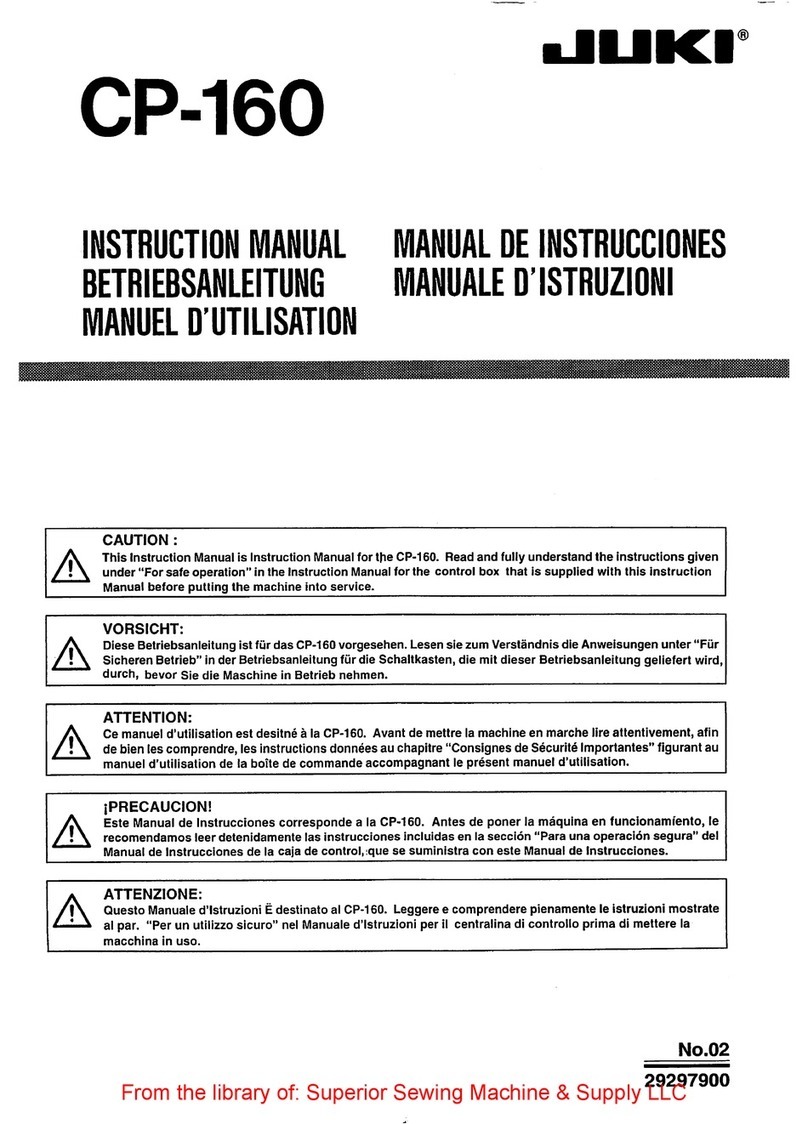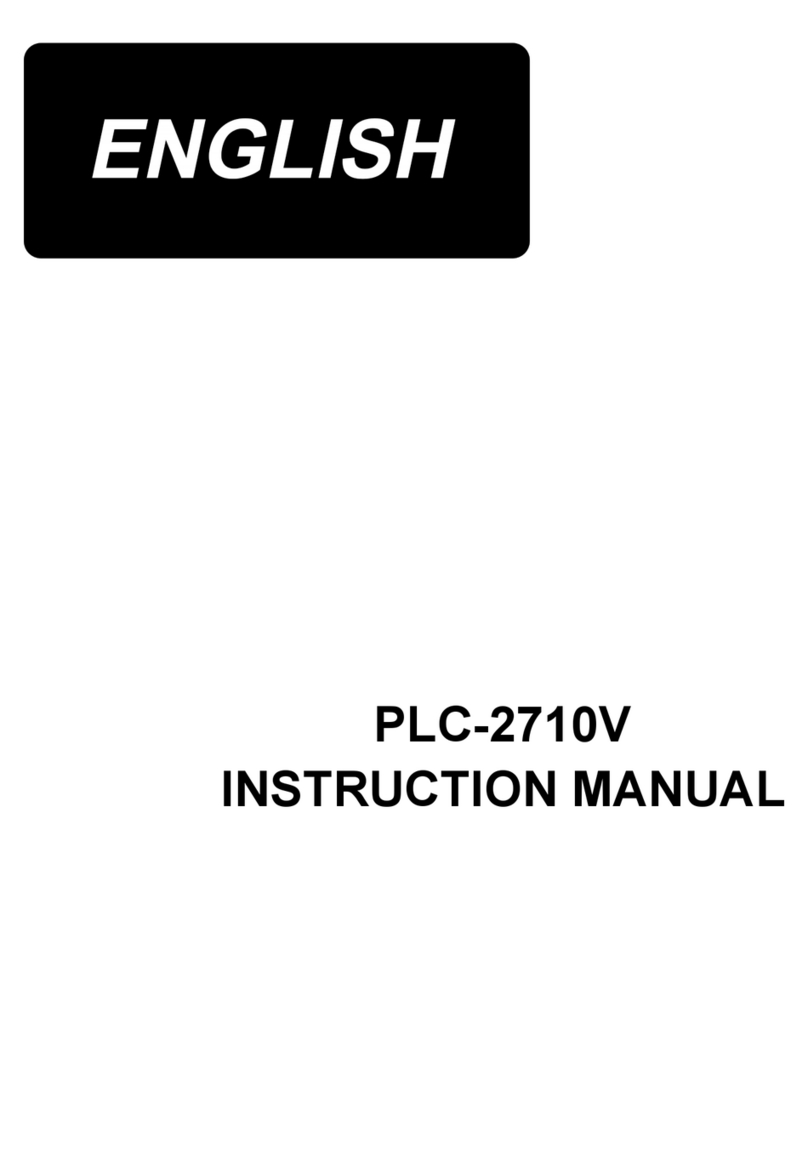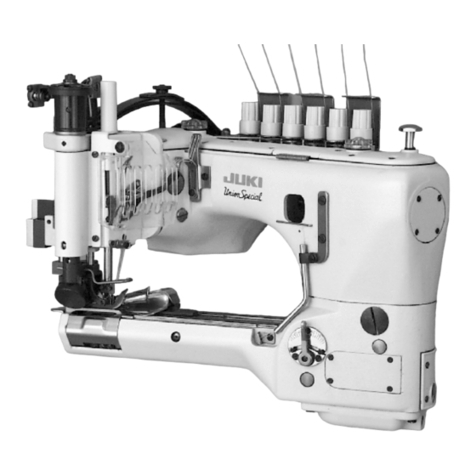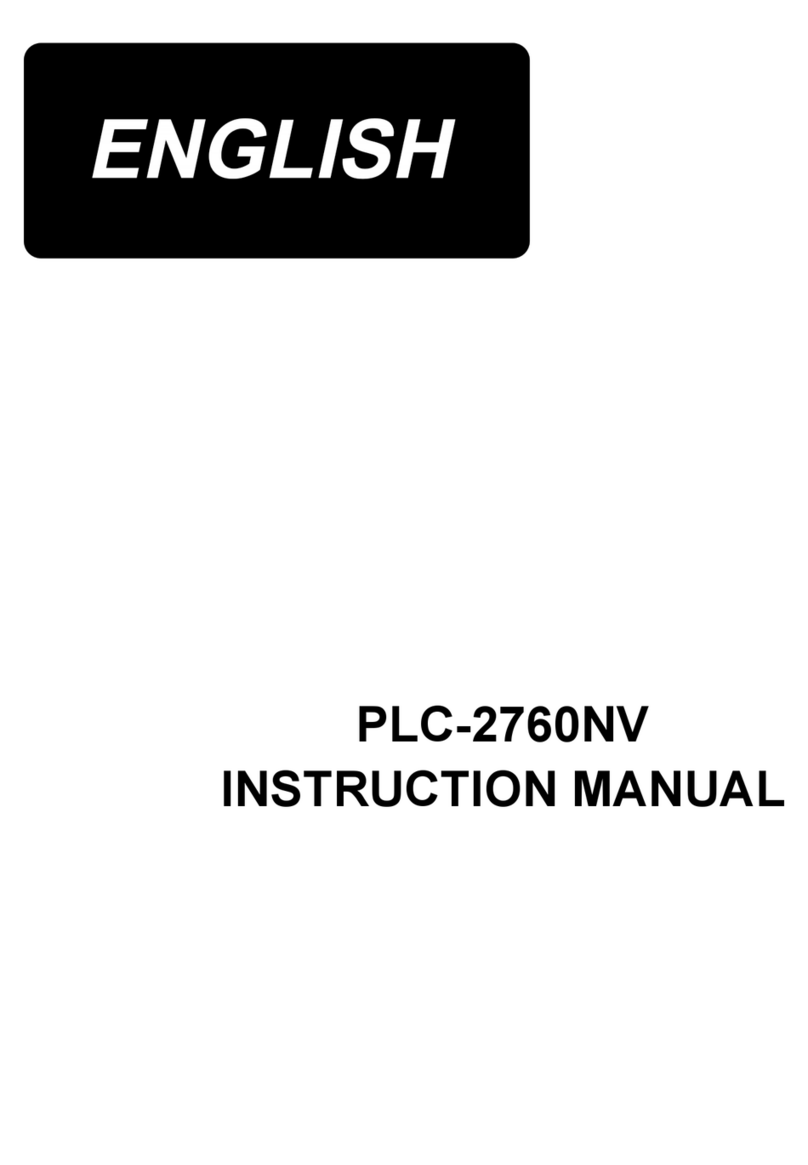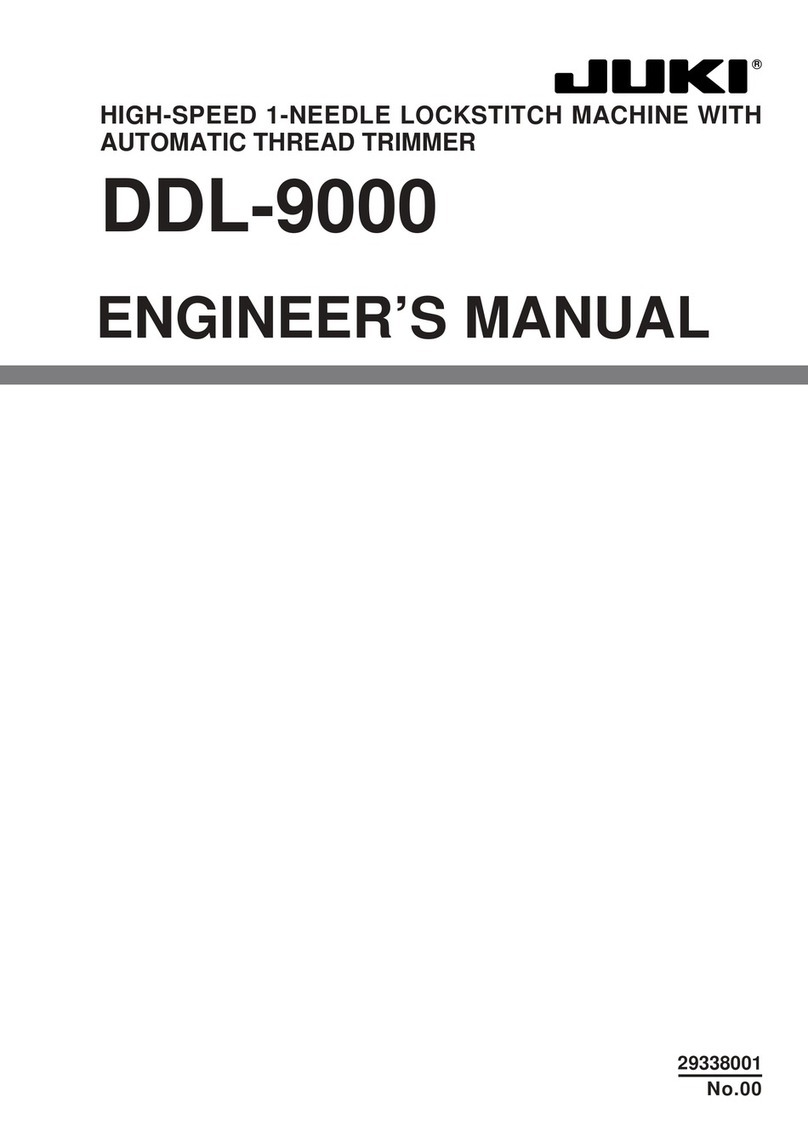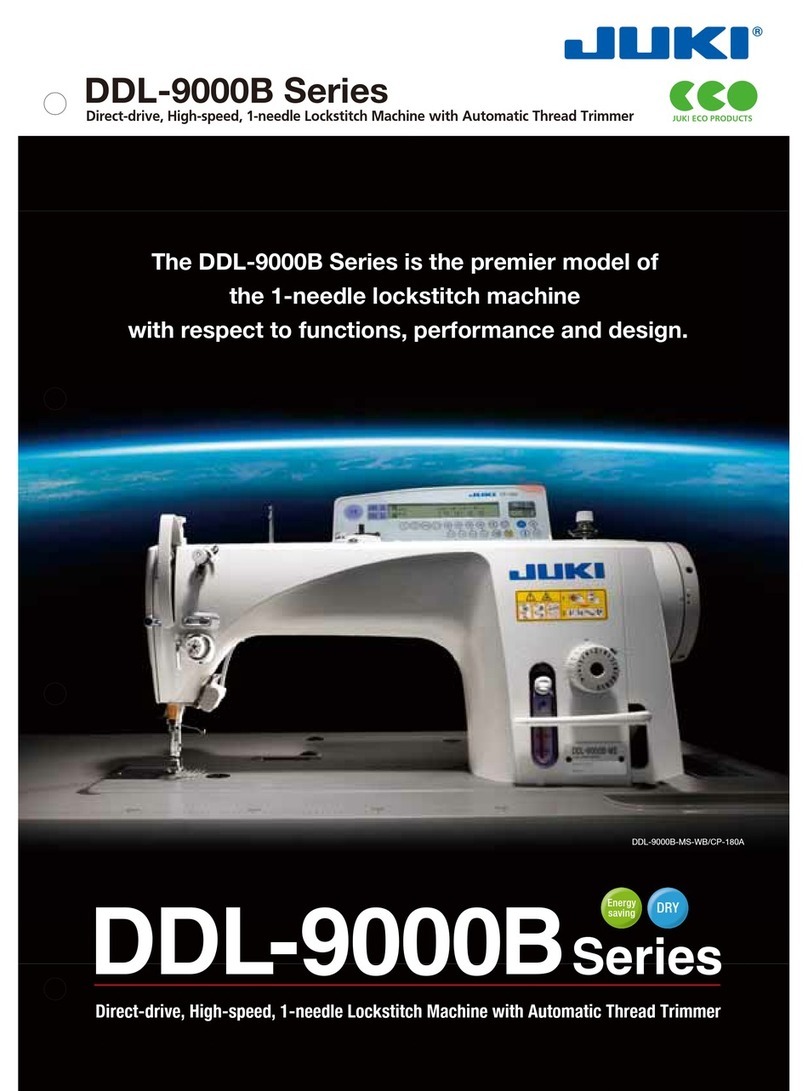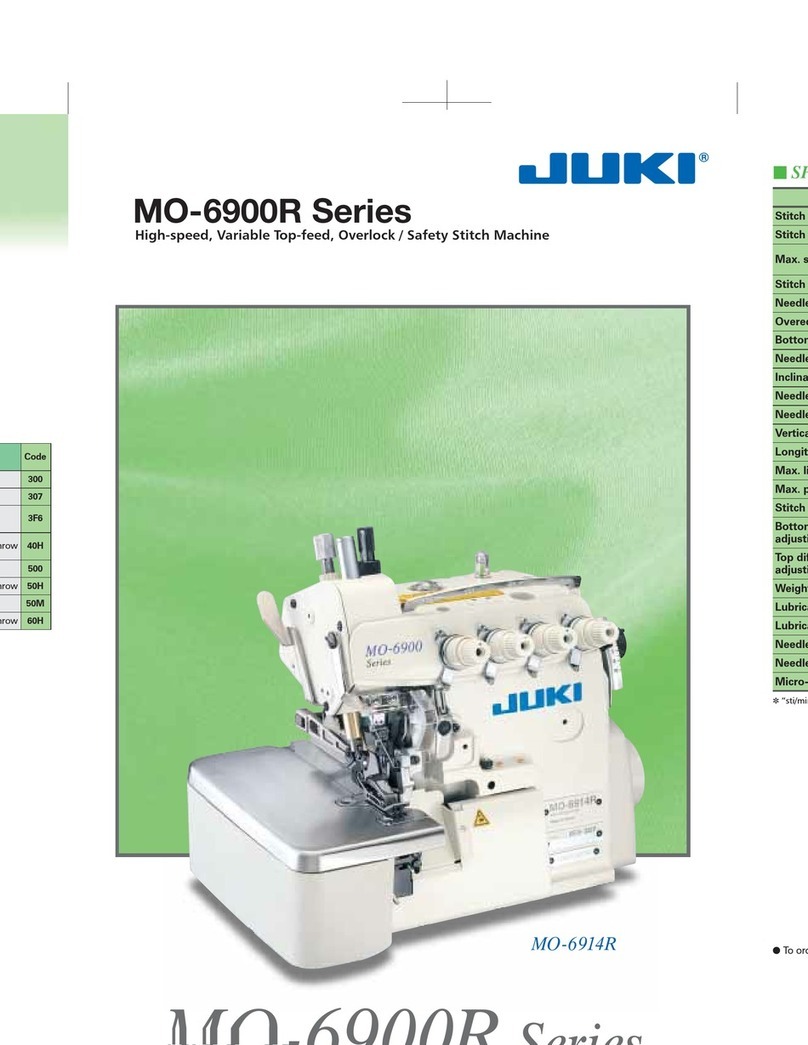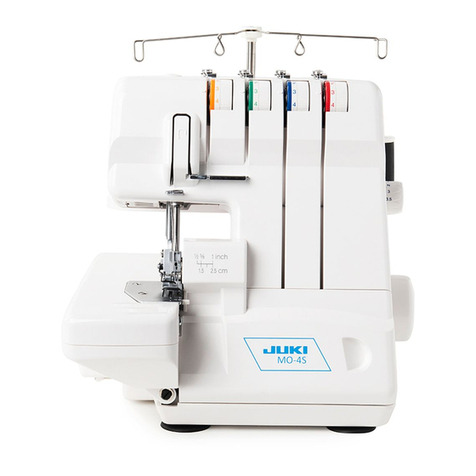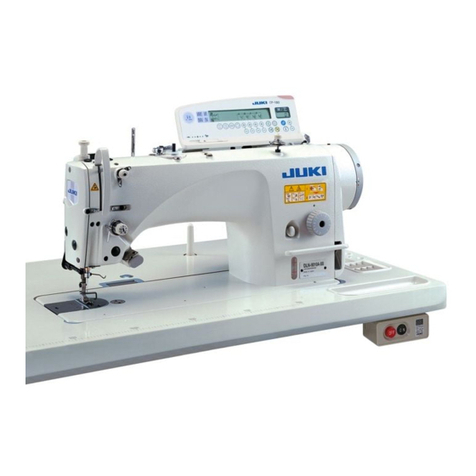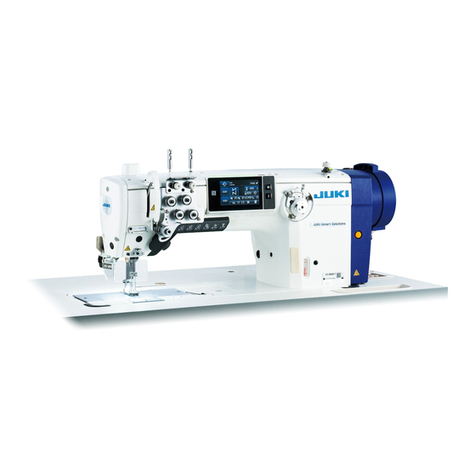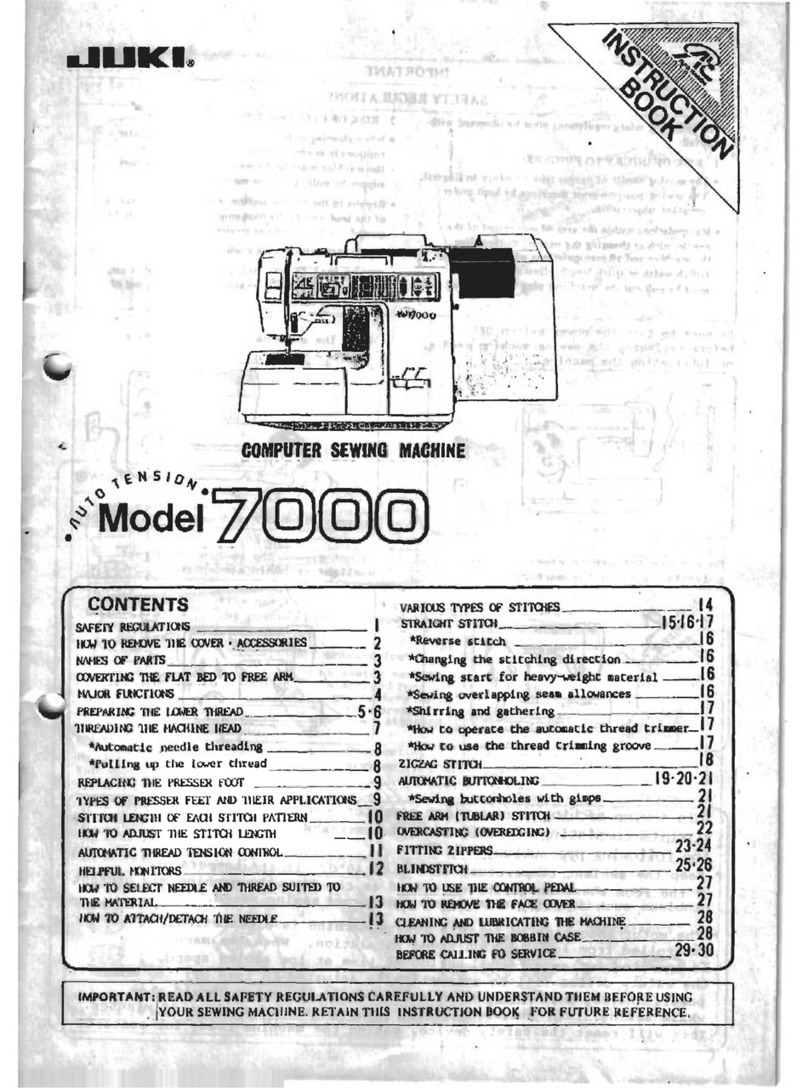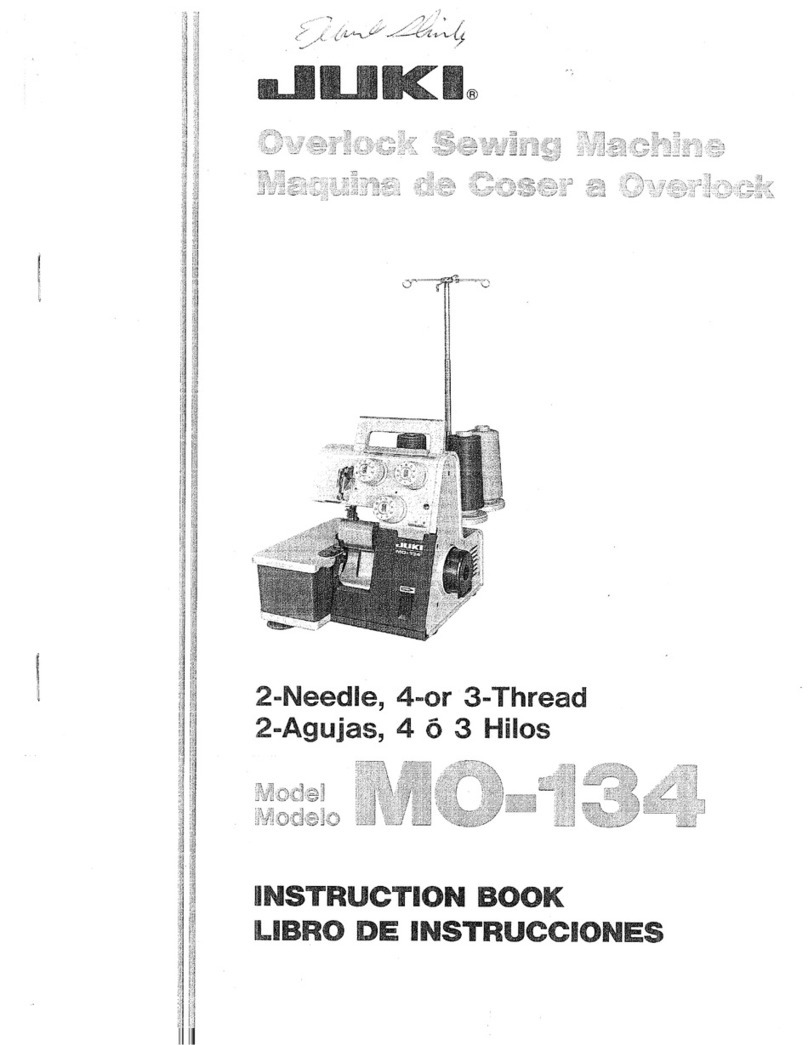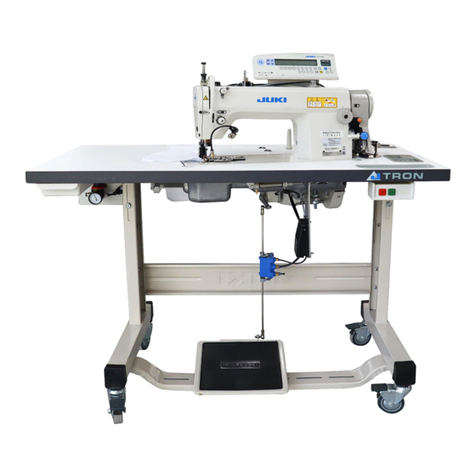
7. MF-7724DU10D60 (4 needles)............................................................................. 77
(1) Specifications . ..................................................................................................................... 77
(2) Needle .................................................................................................................................... 77
(3) Standard adjustments .......................................................................................................... 78
1) Needle mounting.............................................................................................................................78
2) Threading the machine head .........................................................................................................80
3) Adjusting the rocking thread take-up ...........................................................................................82
4) Adjusting the position of the needle thread guide rod ...............................................................84
5) Adjusting the rocking thread take-up thread receiver ................................................................86
6) Adjusting the looper.......................................................................................................................88
7) Adjusting the height of the needle................................................................................................88
8) Adjusting the rear needle guard....................................................................................................90
9) Adjusting the looper thread cam...................................................................................................90
10)Installing position of the spreader ................................................................................................92
8. UT31 ...................................................................................................................... 94
(1) Installation of SC-500 ........................................................................................................... 94
(2) Change of the setting ........................................................................................................... 96
(3) Adjusting the synchronizer ................................................................................................. 98
(4) Installation of SC-510 ......................................................................................................... 100
(5) Adjusting the looper thread trimmer mechanism............................................................ 106
9. UT33 .................................................................................................................... 120
(1) Installation of SC-500 ......................................................................................................... 120
(2) Installation of SC-510 ......................................................................................................... 122
(3) Piping of the thread trimmer device ................................................................................. 124
(4) Adjusting the looper thread trimmer mechanism............................................................ 126
(5) Adjusting the top covering thread trimmer mechanism ................................................. 130
(6) Adjusting the air-blow wiper.............................................................................................. 132
10.TC13 (Tape cutter) ............................................................................................. 134
(1) Specifications ..................................................................................................................... 134
(2) Adjustment of knife ............................................................................................................ 136
(3) TC13C .................................................................................................................................. 140
11. OTHER CAUTIONS ............................................................................................ 146
(1) MF-7700D dry section......................................................................................................... 146
(2) Application of appropriate grease .................................................................................... 146
(3) Adhesives application spots ............................................................................................. 148
12.TROUBLES AND CORRECTIVE MEASURES .................................................. 149
13.DRAWING OF TABLE......................................................................................... 163
(1) Semi-Submerged Type ....................................................................................................... 163
(2) For MF-7700D/E10 (Semi-Submerged Type) .................................................................... 164
